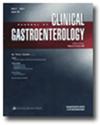一次性使用十二指肠镜:更清洁的标准。
IF 2.8
4区 医学
Q2 GASTROENTEROLOGY & HEPATOLOGY
引用次数: 0
摘要
内镜逆行胰胆管造影术(ERCP)是胆道疾病内镜治疗的金标准。每年平均进行 70 万例 ERCP,其中大部分是使用可重复使用的柔性十二指肠镜进行的。一次性十二指肠镜的创新改变了先进内镜研究领域的动态,主要是为了减少或消除病人之间交叉感染的风险。影响医疗机构能否从标准的可重复使用十二指肠镜转换为一次性十二指肠镜的因素有很多,包括设备的成本、保险公司对新设备的报销以及对环境的整体影响。然而,减少交叉感染导致患者活动性感染、高水平消毒程序产生的环境废物、再处理所需的人员和设备,以及无法经常升级十二指肠镜以获得最佳性能,这些都是有利于向一次性十二指肠镜过渡的因素。由于这些设备在胃肠病学领域尚属新生事物,本综述旨在分析过渡到一次性使用设备的利弊,并简要提及无法做出这一改变的机构的替代选择。本文章由计算机程序翻译,如有差异,请以英文原文为准。
Single-use Duodenoscope: The Cleaner Standard.
Endoscopic retrograde cholangiopancreatography (ERCP) is the gold standard in the endoscopic management of biliary disease. An average of 700,000 ERCPs are performed every year, and most are performed using a reusable flexible duodenoscope. The innovation of disposable duodenoscopes has changed the dynamic in the advanced endoscopy field of study to primarily reduce or eliminate the risk of cross-contamination between patients. Many factors affect whether institutions can convert from standard reusable duodenoscopes to single-use duodenoscopes including the cost of the devices, reimbursement from insurance companies for the new devices, and the overall environmental impact. However, the reduction of cross-contamination leading to active infection in patients, environmental waste produced with high-level disinfection procedures, staff and equipment required for reprocessing, and the inability to frequently upgrade duodenoscopes for optimal performance are all factors that favor transitioning to single-use duodenoscopes. As these devices are new to the field of gastroenterology, the purpose of this review is to analyze the advantages and disadvantages of transitioning to single-use devices and a brief mention of alternative options for institutions unable to make this change.
求助全文
通过发布文献求助,成功后即可免费获取论文全文。
去求助
来源期刊

Journal of clinical gastroenterology
医学-胃肠肝病学
CiteScore
5.60
自引率
3.40%
发文量
339
审稿时长
3-8 weeks
期刊介绍:
Journal of Clinical Gastroenterology gathers the world''s latest, most relevant clinical studies and reviews, case reports, and technical expertise in a single source. Regular features include cutting-edge, peer-reviewed articles and clinical reviews that put the latest research and development into the context of your practice. Also included are biographies, focused organ reviews, practice management, and therapeutic recommendations.
 求助内容:
求助内容: 应助结果提醒方式:
应助结果提醒方式:


